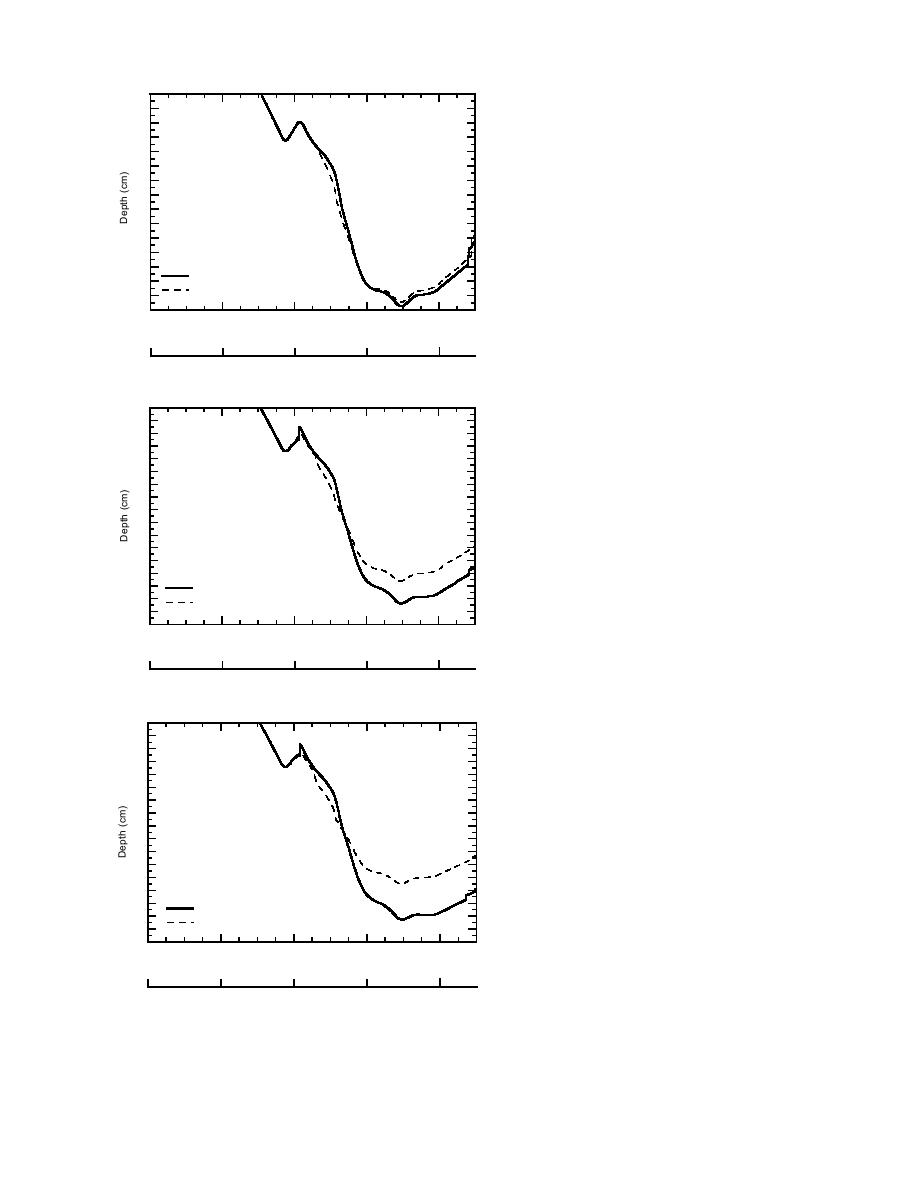
0
is still experiencing a strong cooling trend
when the sand inclusion has frozen. This over-
8
rides any inhibition of further frost penetration
16
due to reduced rate of upward heat flow at the
base of the inclusion. Instead, the soil below
24
the inclusion continues to cool, although at a
slower rate than does soil of the same moisture
32
content when no inclusion is present. For each
40
soil moisture content, the frost penetration is
deeper without the sand inclusion; the freez-
48
ing front extends ∼1, 7 or 11 cm deeper in soil
No Sand
Sand
56
of 10, 17 or 25% moisture content, respectively.
Beneath the sand inclusion, where more up-
0
40
80
120
160
ward flowing heat is retained, frost penetra-
Day (22 Oct is day 1)
tion is greater the drier the soil is (Fig. 18;
21 Oct
30 Nov
9 Jan
18 Feb
30 March
Table 3). This is consistent with freezing occur-
a. 10% moisture content.
ring more readily in drier soil because its
latent heat and heat capacity are smaller. The
0
maximum difference in soil temperatures (in-
8
clusion versus no inclusion) is greater at 37.5-
cm depth under BC-Cold conditions than it is
16
under BC-Warm conditions for all moisture
24
contents of the soil (Table 4).
32
Whether a sand inclusion is present is least
important to sensor system performance un-
40
der BC-Cold conditions. During the harshest
48
portion of the BC-Cold winter, days 100 to 135,
the soil above the sensor cables remains sever-
56
No Sand
Sand
al degrees below freezing in both cases. In
64
response to the subsequent increase in soil sur-
0
40
80
120
160
face temperature, to 0.1C by day 143, the soil
Day (22 Oct is day 1)
at 7.5-cm depth warms to 0.1C regardless of
moisture content and, for 17% moisture con-
21 Oct
30 Nov
9 Jan
18 Feb
30 March
tent soil, regardless of whether the inclusion
b. 17% moisture content.
material is sand or sandy soil.
0
Although frost depth is less when a sand in-
clusion is present (Table 3), the relative reduc-
8
tion is slightly smaller, 1218%, than under
16
BC-Warm conditions. This, plus the overall
24
deeper frost penetration under BC-Cold condi-
tions, makes the effect of a sand inclusion on
32
heat flow less significant to sensor system per-
40
formance under BC-Cold conditions.
48
Discussion of inclusion effects
56
No Sand
on soil temperatures
Sand
Temperature profiles based on one-dimen-
64
sional simulations of heat flow through silty
0
40
80
120
160
soil with and without a sand inclusion show
Day (22 Oct is day 1)
that the temperature relationship is variable.
21 Oct
30 Nov
9 Jan
18 Feb
30 March
For all moisture contents, the soil at 37.5-cm
c. 25% moisture content.
depth is colder under the sand inclusion for
Figure 17. Comparison of the location of the freezing front the portion of the early winter corresponding
in silty soil with and without a sand inclusion present, as to rapid frost penetration through the dry sand
determined with one-dimensional numerical simulations inclusion. The duration of this period decreas-
under BC-Cold conditions.
es with increasing moisture content of the soil,
17



 Previous Page
Previous Page
